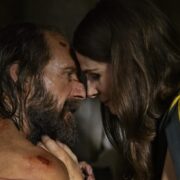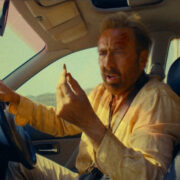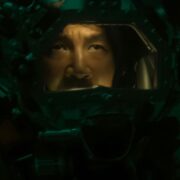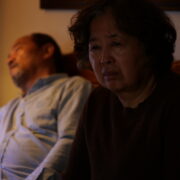George Miller’s Furious Feminism
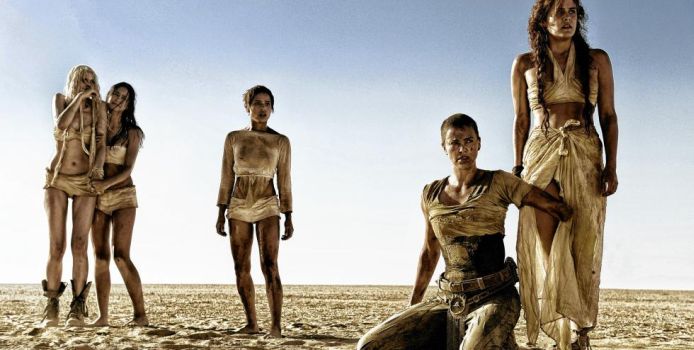
Ben's milkshake is unisex and brings everyone to the yard.…
Mad Max: Fury Road, the latest from Australian director George Miller, is overtly, and perhaps primarily, an action film. The vast majority of its two hour runtime is devoted to a single unrelenting chase sequence; it both drives the narrative and provides a platform for the manic and brilliantly staged action set-pieces which will define the film for many audiences. Assessed purely in terms of the visceral impact of its action sequences, Fury Road is a striking success, but like the very best films, Miller’s offering is effective on several levels. There is enough bombast and creativity to satisfy even the most jaded of action fans, but Miller’s ambition extends into higher-reaching and more meaningful territory.
An analysis of the visual and narrative symbols reveals a profound and well-developed thematic subtext beneath the blood and thunder of Fury Road; Miller uses this post-apocalyptic tale to confront the dangers of untempered masculine hegemony, criticize fanatical support of the modern military complex, and emphasize the necessity of femininity in culture and government.
Nuts and Bolts
Fury Road begins with a guttural, ominous voiceover provided by Tom Hardy’s titular Max. The exact details are vague, but the general scenario is familiar: the world is in ruin following some sort of nuclear conflict; society has devolved into small, desperate factions, clinging to the scraps of shattered industry and fighting over increasingly scarce resources. The bleak, post-crisis setting is well-trodden territory for modern pop-fiction, but it’s worth noting Miller’s contribution to state of affairs; Miller’s Mad Max (1979) effectively helped bring the post-apocalyptic, dystopian genre into existence. Miller isn’t simply adding to the apocalypse library, he’s returning to a world he helped create, and it’s fascinating to see how he expands his original creation.
Replacing Mel Gibson in the role of “Mad” Max Rockatansky is Tom Hardy. He brings the character a darker, grimmer edge, but both iterations occupy the same niche. Max is a former cop who wanders society’s aftermath in search of a purpose, haunted by the souls of those he couldn’t save and pursued by the nightmare inhabitants of mankind’s horrific epilogue. “In this wasteland,” Max rumbles, “I am the one who runs from both the living and the dead.” Compared to Gibson’s slightly winking portrayal, Hardy’s character seems straightforward; he’s the fallen knight, the silent hero hiding his nobility beneath a gruff, embittered exterior. Miller spends the first few minutes of the picture emphasizing the archetype, and then after a frantic, scene-setting opening sequence, removes Max from the figurative driver’s seat. In his place, Miller sets up the film’s true functional protagonist: Charlize Theron’s Imperator Furiosa. Max is present for all of the goings on, but it is Furiosa’s actions which drive the film. Title aside, this is Theron’s movie.
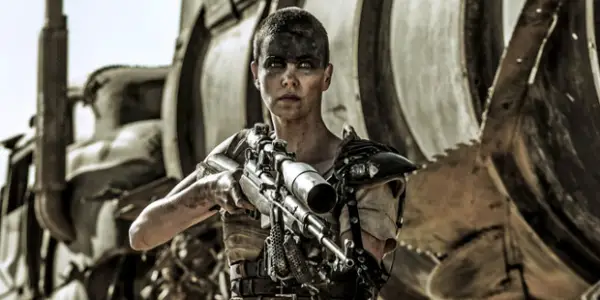
Having been kidnapped as a child by the forces of the warlord Immortan Joe, Furiosa has since risen through the ranks of Joe’s war cult and has attained the title of Imperator, a sort of general-cum-long-haul-trucker. She’s given the honor of driving the War Rig, a nightmarish oil tanker cobbled together from pieces of any number of rusted jalopies. At Joe’s command, and as the poor and malnourished dwellers of the Citadel look on, Furiosa leads a war party onto the open road to collect gasoline and bullets. When Furiosa takes a sudden detour shortly after departure, it becomes clear that all is not well in The Citadel. Joe returns to the comfortable prison set aside for The Wives and finds it empty; on the wall, in white paint, the women have scrawled their defiant declarations.
“Our children will not be warlords!”
“Who killed the world?”
Liberated from the sexual ownership they’ve been subjected to, the Wives stow away in Furiosa’s War Rig and make their escape. Joe rallies the troops to recover his treasures, Max becomes a reluctant ally of Furiosa and the Wives, and the chase begins.
Immortan Joe
The man desperate to recover his living, breathing belongings is Immortan Joe. A maniacal and tumor-ridden despot, Joe rules over The Citadel, a rocky fortress built around a life-giving aquifer. With his flared eyebrows and leering, skeletal respirator, Joe is a visual behemoth, horrifying and fascinating in equal measure. Joe is outwardly menacing and virile, but he seems to be in a state of decay. His torso is riddled with tumors and he seems unable to live without an elaborate breathing system attached via hoses to his grinning mask. Symbolically, Joe functions as the figurehead for both white hegemony and the modern military complex. Visually, the connection is easy to make – from the flowing hair to the powdery white paint that covers his body, the dominant color of Joe’s costume is white. He wears plastic armor adorned with phony war medals and formed molded with articulated muscles – it covers his flabby and disfigured torso but allows the whiteness beneath to shine through. The same visual motif extends to the cultic “War Boys” who serve as his devoted personal army – each one is bare from the waist up and coated in white paint.

Joe’s symbolic role as “The Man” is further enhanced by his materialistic, possessive bent. To use a contemporary parlance, Joe is the ‘1 %’ – his power stems from control of resources. With the flick of his powdered wrists, Joe can bestow or withhold water to the peons far below his tower. The squalid masses seem to revere Joe as their king and savior, but when control of the water supply changes hands late in the film, we see that that their ostensible piety is nothing but fear: fear of a militarized state which can retaliate by violence, or perhaps more simply, by withholding the resources that facilitate basic life. The divide between The Citadel’s haves and have-nots is a critique of modern cultures. The supposed right of those in power is reinforced by myth and dogma, but the central conflict comes down to resources; we stay in line for fear that we’ll lose out on a piece of the pie.
Immortan Joe is not just content to hoard physical resources, however. He treats people as possessions, and it is this fact which frames the conflict that drives Fury Road’s narrative. Sure, Joe is a fascist and a warmonger, but his most costly sin proves to be his assumed right to sexual ownership. Joe keeps a harem of five “Wives” inside The Citadel, ostensibly to provide healthy male heirs to uphold his empire. Whether due to radiation poisoning or a declining gene pool, Joe’s attempts at siring a viable heir seem to be a losing battle – one son (the wonderfully named Rictus Erectus) is a physical specimen with the mind of a child; another is a dwarf confined to a motorized wheelchair.
When the breeder wives are no longer fit to bear children, they become human milk cows, overfed and kept in a state of perpetual lactation in order to provide ‘mothers milk’ to Joe and his cronies. The strange empire that Joe has created is obsessed with women, but only as objects. They are protected and nourished, but completely dehumanized; hoarded as treasures, but marginalized as individuals.
While the masses clamor for a few precious drops of water, Immortan Joe and his cronies devote their efforts to maintaining the luxury of their own existence and reinforcing the military complex. Adding to the imbalance is the self-serving nature Joe’s personal army. The white-painted War Boys – whose ranks include young boys barely out of diapers – are adherents of Joe’s strange but powerful cult. Joe positions himself as a deity, a savior to raise his followers from the ashes of a broken world with blood and water. The machines of war are his doctrine. The War Boys worship the symbol of the steering wheel – to drive a war machine is an honor surpassed only by death in battle. Those who die gloriously for the Citadel will “ride eternal, shiny and chrome,” and take their place alongside Joe in Valhalla. Here, Miller is examining the values of warlike regimes and the damaging effect the celebration of violence can have on a society’s youth. Joe’s world is an extreme allegory, but Miller uses apt symbols to relate the War Boys’ plight to reality. The use of car-worship, violence, and rock music (which serves as the marching cadence for the Joe’s War Parties) to target at-risk youth mirrors the recruitment techniques of modern militaries.
The great irony is the seemingly pointless exercise of violence in which the War Boys take part. When Furiosa’s convoy takes to the road early in the film, it is not to defend borders or even to confront enemy presence, but simply to accumulate more of the materials required to maintain conflict: bullets and gasoline. Immortan Joe has created a military system driven by profit and the perpetuation of conflict rather than victory. Throughout the film, the Wives pose the recurring question: “Who Killed the World?” Miller’s answer seems clear: the devastation of civilization is the inevitable endgame of the corporate military complex. When violence is celebrated and war-making is an end in itself, how can the eventual outcome be anything but society’s annihilation?
The Vuvalini
If the ideologies of Fury Road are plotted on a spectrum, the Vuvalini of Many Mothers exist at the end furthest from Joe. It is from this matriarchal group that Furiosa and her mother were taken, and to which Furiosa is desperate to bring the liberated Wives. Furiosa remembers the home of the Vuvalini as the “Green Place,” a seeming Eden where she was born. When Furiosa, Max, and the Wives finally reach the Vuvalini, they discover the Many Mothers attempting to carve out a life on the edge of an endless salt plain; the soil of the Green Place has been soured by radiation, and the Vuvalini have been forced to flee.
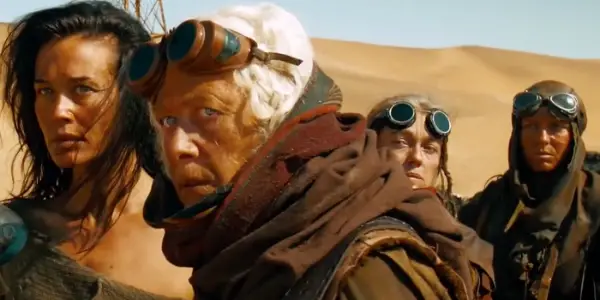
The Vuvulani provide a stark contrast to the rulers of the Citadel. To the Many Mothers, the ultimate goal is cultivation; having lost The Green Place, they have become the metaphorical keepers of a greener, more nourishing past. They aren’t trying to hoard resources or bend anyone to their control, they are simply seeking a return to a whole world. This aim is symbolized by a bag of seeds carried by one of the Vuvulani elders. Like a post-apocalyptic Johnny Appleseed, she plants fruit trees whenever she can, knowing full well that the radiation-poisoned soil makes the task all but futile. It is the commitment to improve and nourish, rather than to lord over minions which sets the the women of Fury Road apart from the warmongers of the Citadel. While the Vuvalini’s emphasis on natural and egalitarian values provide a positive alternative to the machismo and violence of Joe’s Citadel, they are limited by their distrust of all men.
Nux and Furiosa – A Fusion of Values
If Joe represents the worst of the male hegemony and the Vuvulani represent the best of femininity, Miller uses two characters demonstrate the reconciliation of two opposing ideologies. The first is Nux, one of Joe’s fanatical War Boys. Initially committed to Immortan Joe’s strange vision of glory by death, Nux spends the early portion of the film trying to kill Furiosa and reclaim the Wives. When his final attempt – personally endorsed by Immortan Joe – is foiled by the Wives, Nux has a crisis of faith. Wallowing in despair at his failures and his slow death at the hands of Larry and Barry (a pair of malignant tumors), Nux is discovered comforted by Capable, one of the escaped Wives. It is this small moment of comfort and emotional nourishment which leads Nux to question Joe’s violent dogmas and join Furiosa’s cause. Miller shows the positive effect of a feminine presence – Nux is not emasculated by feminine influence, but enriched and empowered by it.
Miller provides Nux to demonstrate a transition of values: he puts Furiosa on display as the finished article. Presented as a true and balanced leader, Furiosa is powerful yet morally aware. She recognizes that her plan will likely breed violence, but sets as one of her tenets the avoidance of unnecessary killing; The War Boys, it is argued, are simply lost children. The system (Joe) which educates them in the ways of war, and sexual conquest is the ultimate enemy. Furiosa’s visual aspect emphasizes the conflicting aspects of her character. In appearance, she is the most masculinized woman in the film. With her shaved head and axle-grease warpaint, she provides a stark contrast to the pampered beauty and flowing robes of the Wives. Her mechanical arm is the symbol of her use of violence as a means, but not as an end. She is reliant upon the literal machinery of war to achieve her goals – liberating the Wives and returning to The Green Place – but the violence is not internalized. It is a necessary tool for her actions, rather than an integral part of her character. Furiosa represents Miller’s ideal – an individual who accepts the value of both masculine and feminine strength and uses it to pursue noble ideals.
Conclusion
Max Max: Fury Road somehow strikes a balance between bombast and meditation. George Miller allows us to revel in outrageous spectacle while subverting genre conventions and creating a rich and thoughtful symbolic subtext. There is a struggle at the heart of the film which goes far beyond the battle for gasoline or water or the spoils of war – Miller wants his audience to examine the ways in which male hegemony and the modern military complex have shaped our world and, if left unchecked, might take us to the brink of disaster. Miller’s symbols emphasize the absolute necessity of femininity and egalitarian virtues in the face of socio-sexual oppression and abuse of power. Fury Road props a nightmare dystopia in front of the blazing Outback sun, and if you look closely enough, you can see hope in the shadows.
(top image source: Warner Bros. Pictures)
Does content like this matter to you?
Become a Member and support film journalism. Unlock access to all of Film Inquiry`s great articles. Join a community of like-minded readers who are passionate about cinema - get access to our private members Network, give back to independent filmmakers, and more.
Ben's milkshake is unisex and brings everyone to the yard. He'd love to give you more information about it but doesn't work pro bono.


